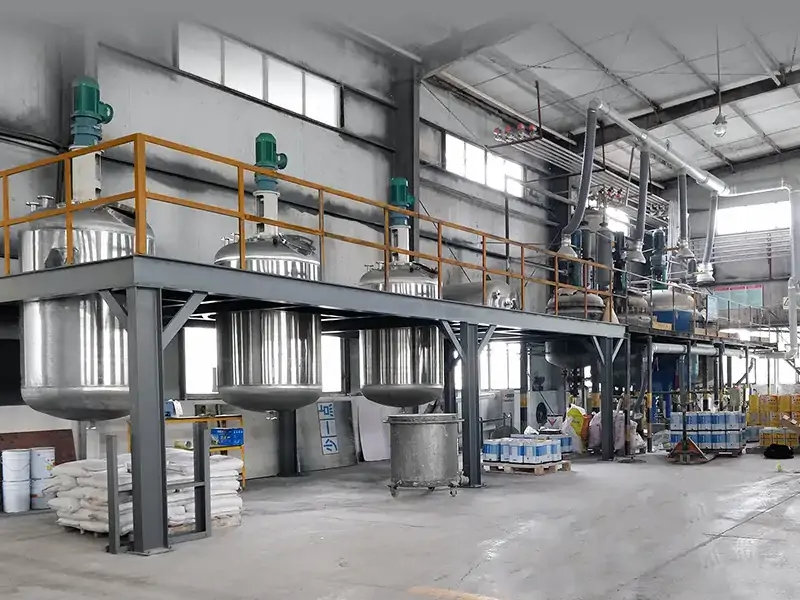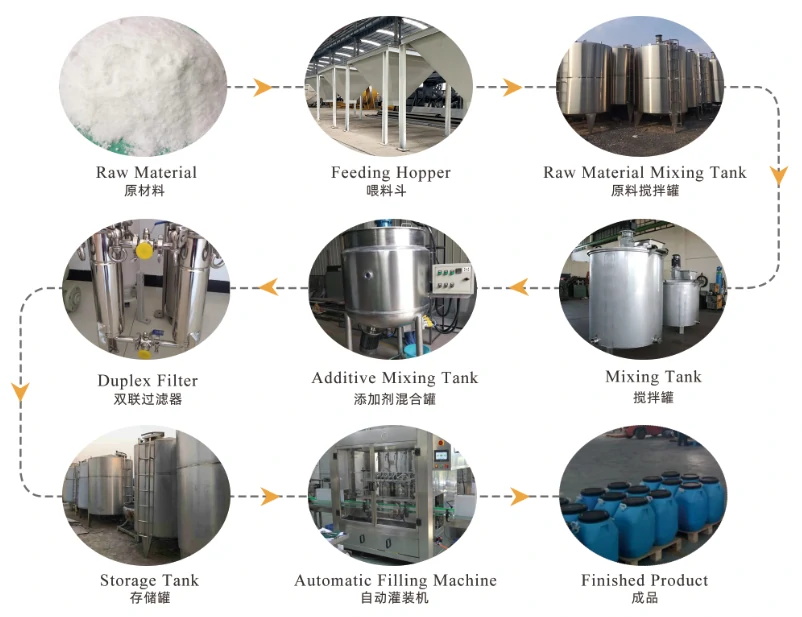
Liquid Fertilizer Production Line
A liquid fertilizer production line is a series of interconnected processes and equipment designed to manufacture liquid fertilizers in a systematic and efficient manner. Liquid fertilizers are nutrient-rich solutions that contain essential elements such as nitrogen (N), phosphorus (P), potassium (K), and other trace elements necessary for plant growth and development.
Raw Material Storage and Handling:
Storage tanks or silos: To store raw materials like ammonium nitrate, urea, phosphoric acid, potassium chloride, and other nutrients.
Conveyors: To transport raw materials from storage to the mixing area.
Mixing and Dissolution:
Mixing tanks or reactors: To dissolve and mix the raw materials in water to create the liquid fertilizer solution.
Agitators or mixers: To ensure uniform mixing of the raw materials and water.
Filtration and Separation:
Filters: To remove impurities and solid particles from the liquid fertilizer solution.
Separators: To separate any remaining solid particles or unwanted materials.

pH Adjustment:
pH control systems: To adjust and control the pH level of the liquid fertilizer solution.
Homogenization:
Homogenizers: To ensure a consistent and uniform nutrient distribution in the liquid fertilizer.
Quality Control and Monitoring:
Analytical instruments: To monitor nutrient concentrations, pH levels, and other parameters to ensure product quality and consistency.
Control systems: To automate and regulate the production process.
Packaging and Filling:
Filling machines: To fill the liquid fertilizer into containers such as bottles, cans, drums, or bulk tanks.
Labeling machines: To label the containers with product information.
Storage and Distribution:
Storage tanks: To store the finished liquid fertilizer before distribution.
Pumps and pipelines: To transfer the liquid fertilizer from storage to distribution points.
Distribution equipment: Such as tanker trucks or containers for transportation to retailers or end-users.
Cleaning and Sanitation:
Cleaning equipment: To clean and sanitize the production equipment and pipelines to prevent contamination.
Raw Materials for Liquid Fertilizer Production Line
1.Water-Soluble Fertilizer Salts:
Nitrogen sources: Urea, ammonium nitrate, ammonium sulfate, calcium nitrate, potassium nitrate, etc.
Phosphorus sources: Phosphoric acid, monoammonium phosphate (MAP), diammonium phosphate (DAP), etc.
Potassium sources: Potassium chloride, potassium sulfate, potassium nitrate, etc.
Micronutrient sources: Salts or chelated forms of iron, manganese, zinc, copper, boron, molybdenum, etc.
2.Liquid Concentrates:
Liquid phosphoric acid: Provides phosphorus directly and can be used as a base for some liquid fertilizers.
UAN (Urea-Ammonium Nitrate) solution: A liquid fertilizer containing nitrogen from urea and ammonium nitrate.
3.Organic Materials:
Organic liquid fertilizers: Extracts from organic matter such as compost, manure, fish emulsion, seaweed extracts, etc.
4.Seaweed Extracts:
Seaweed-based liquid fertilizers that contain various beneficial nutrients, plant growth regulators, and trace elements.
5.Plant Extracts:
Liquid fertilizers derived from plant extracts, which can contain natural growth stimulants and organic nutrients.
6.Bio-Organic Additives:
Liquid fertilizers enriched with beneficial microorganisms (e.g., bacteria, fungi) to promote soil health and nutrient availability.
7.Humic and Fulvic Acids:
Liquid fertilizers containing humic and fulvic acids to improve nutrient absorption and enhance soil structure.
8.Amino Acids:
Liquid fertilizers enriched with amino acids, which can improve nutrient uptake and plant resistance to stress.
9.Synthetic or Organic Chelates:
Used to improve the availability of micronutrients in the liquid fertilizer.
10.Buffering Agents and Stabilizers:
1.Rapid nutrient absorption by plants.
2.Precision application through various irrigation systems.
3.Homogeneous nutrient distribution in the fertilizer solution.
4.Customizable formulations for specific crop needs.
5.Compatibility with other agricultural inputs.
6.Soil structure improvement and nutrient availability.
Investing in an liquid fertilizer production line is not just about upgrading equipment—it’s about transforming the way agriculture works. With LANE’s advanced systems, farmers and agribusinesses can increase productivity, cut costs, and protect the environment while delivering tailored nutrient solutions to the market.
For more details, please feel free to contact us.
Henan Lane Heavy Industry Machinery Technology Co., Ltd.
Email: sales2@lanesvc.com
Contact number: +86 15515885328
Whatsapp: +86 15515885328
Leave a Comment
Latest Posts
LANE has more than 500 successful cases and is committed to providing customers with first-class solutions, high-end machinery and equipment, and one-stop pre-sales, sales and after-sales comprehensive customer service.